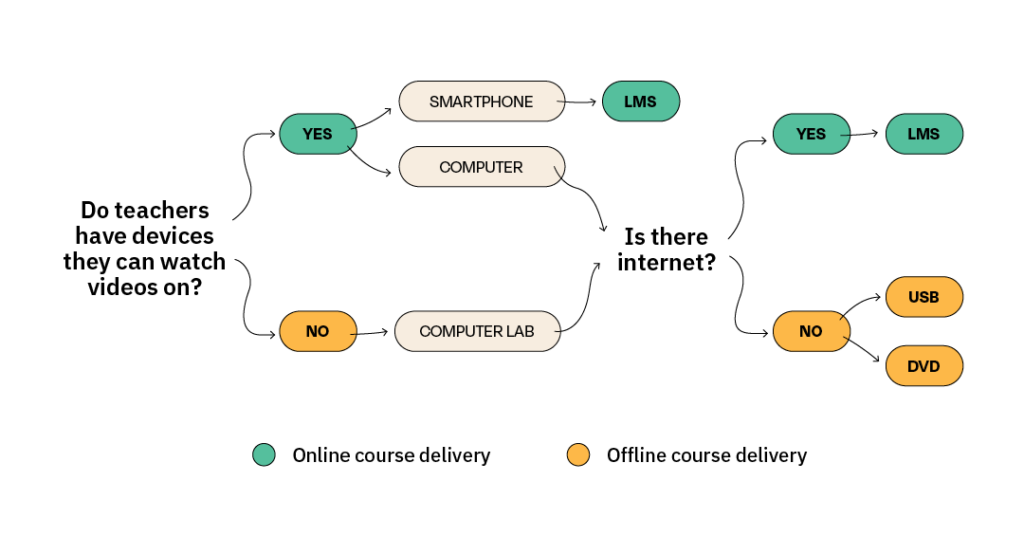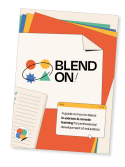How the University of Rwanda and VVOB chose their blend of in-person and remote CPD
The University of Rwanda – College of Education (URCE), in partnership with VVOB – education for development, has been organising accredited Continuous Professional Development (CPD) programmes for school leaders and secondary teachers since 2018. These programmes were initially being offered through in-person sessions. Accelerated by the COVID-19 pandemic, a quick shift to remote learning took place. Building on the lessons learnt from remote CPD delivery, in 2022, the development task-team consisting of staff from URCE and VVOB, re-designed the blended delivery approach of the CPD programmes, responding to the following question:
Which delivery approach is the best fit to achieve our learning outcomes?
The underpinning pedagogy of the programmes is summarised in the following principles: competence-based learning, a sense of community and critical reflection.
Participants are requested to actively try-out, practise, share and reflect on course content. Together with the intended learning outcomes and available course content, the development task team considered these course principles in the delivery of the CPDs. Online learning is used to help participants explore new content, to gain understanding via interactive activities, and to start reflecting and linking this knowledge to the participants’ own context. The in-person sessions are intended for activities that help apply the content at a deeper level. These sessions also provide an opportunity to close learning gaps identified by analysing the participants’ online learning progress, to help participants to take the next step in their learning via reflection, peer learning and application, practise skills via exercises and role play, and to strengthen a sense of community.
Each CPD starts with an in-person orientation session to introduce participants to the purpose and delivery approach of the programme. Moreover, such in-person orientation sessions offer the opportunity to build relationships.


